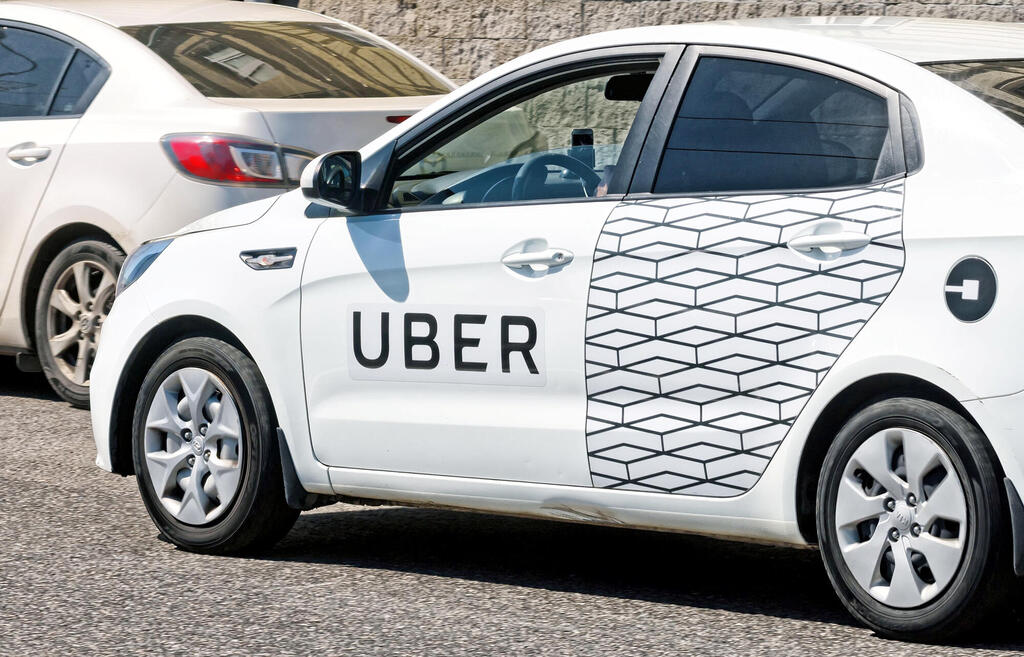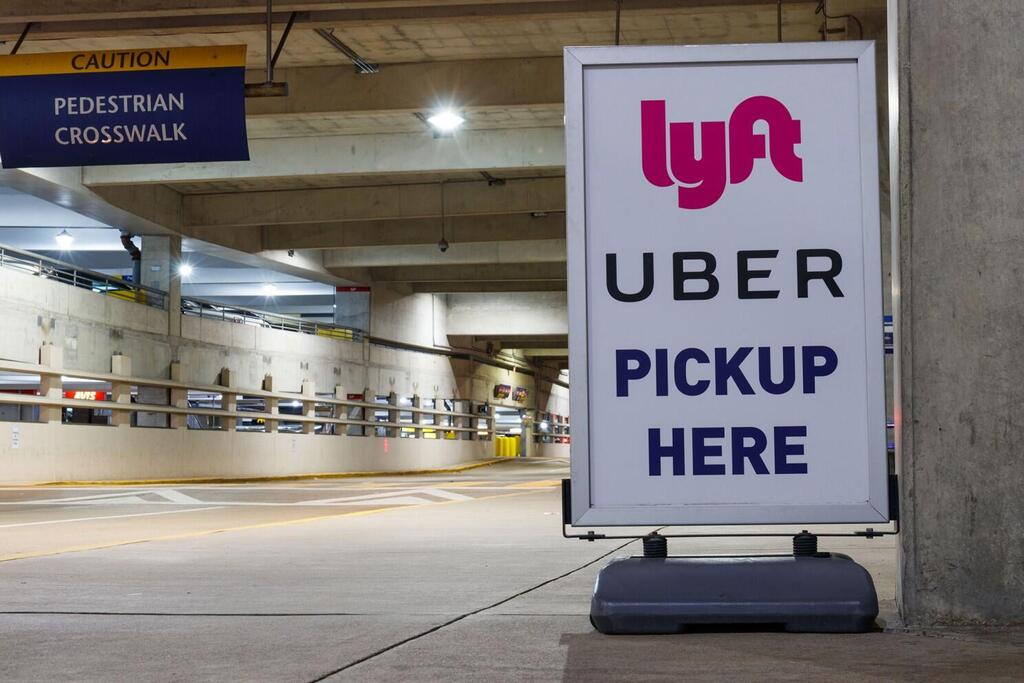
Analysis
One star rating: Is this the end of the road for Uber and the like?
After 15 years of grandiose promises, huge investments and IPOs, Uber, Lyft and DoorDash still aren't making a profit
For 15 years, the dominant narrative regarding companies like Uber, Lyft, and DoorDash was that they invented innovative and unique technology, through which it is possible to offer services at a higher level than the existing ones and at significantly lower rates. Strong international growth justified for the investing public high valuations that expressed a strong potential for future profitability and the elimination of the existing market. Looking back now, we can say that most of the promises were not true - the applications are not unique but easy to copy, the services are similar, the rates are higher than ever and most importantly - future profitability never materialized.
The reports published by these companies for 2022 and the first quarter of 2023 express this quite literally. The reports are to the point and without much hype. The grandiose ambitions to reshape markets were removed, and the "disruptive" language was deleted. We are only left with a business model that is a traditional application-based service, and a tendency to highlight irrelevant metrics to embellish performance.
Uber China collapsed, with the company abandoning all of its Southeast Asian operations, as well as selling its Russian operations and completely abandoning its autonomous vehicle development efforts. Lyft also sold off its self-driving car operations and shuttered its experimental delivery service Lyft Delivery, laying off 13% of its workforce in February and another 26% of its staff in April.
Despite waking up from their dreams, the companies still provided familiar bottom lines: Lyft lost $188 million, and Uber lost $157 million (after a tax benefit of $320 million). In a multi-year perspective, there is a clear trend: DoorDash recorded a record loss of $1.36 billion in 2022, and in the last five years it recorded losses that amount to over $3 billion. Lyft recorded a record loss of $1.58 billion in 2022, and in the last five years recorded losses that amounted to almost $8 billion. And Uber recorded a record loss of $9.14 billion in 2022, and in the last five years recorded losses amounting to approximately $24 billion.
The numbers are not flattering, and in reality the companies tend not to emphasize the bottom line. In their press releases, they usually do not report on the front page their bottom line loss, but only emphasize the top lines including revenues, orders and EBIDTA, while completely ignoring the question of whether this growth will ever yield sustainable profits (15 years after their establishment - the answer is - still no).
If you go along with these indicators, the reality does not look bad at all: Lyft recorded a 14% growth in revenue in the first quarter of this year compared to the corresponding quarter in 2022, and a 28% growth in revenue for 2022 compared to 2021. DoorDash recorded a 39% growth in revenue in the first quarter of 2023 compared to the corresponding quarter last year, and a 35% growth in revenues between 2021 and 2022. And Uber recorded growth of 29% in the first quarter of 2023, and growth of 59% in an annualized view.
These are numbers that encourage the market, but they don't tell a story that can explain the narrative that the companies make sure to tell the public: how their business model benefits all parties, while at the same time generating an international business. In the reports, it is not clear how much a courier or driver earns, how many hours an average driver works (DoorDash published this figure for the first time in the annual reports of 2022 and there is no source for comparison). It is not clear what rate of revenues the companies take from orders and whether it changes, or the way they price travel or deliveries. It is also lacking how much or when and at what rate they raised prices for customers or restaurants, anything that will allow us to understand the reason for the increase in revenue or the quality of the business model and the change in results.
Without any details, the human brain concludes that the increase in revenue or EBIDTA is only related to the growing popularity of the product or efficiency. This is exactly the goal. But we know from various and multiple studies that the companies have aggressively raised their prices several times in the last year and a half, taking an increasing proportion of the drivers' income and larger portions of the restaurant orders. And yet this approach that emphasizes results without substantial parts of the company's expenses succeeds in the public mind and allows companies to boast about their performance quarter after quarter, year after year, even though they do not generate a net or operating profit.
For a long time, the alternative indices and the aggressive growth were received with a warm embrace by the venture capital sector that subsidized these companies. But in the last year and a half, a lot of air has come out of the bubble of the "gig economy" companies. Considering this news and also the growing understanding in the market that it can no longer reward a lack of profitability in the current economic conditions, the market value of the companies began to collapse: DoorDash collapsed by 73% from the peak in November 2021; And Lyft has collapsed in the last year and a half by 88%. These falls are in line with the technology sector as a whole, which has begun to shun unreasonable risks.
Uber stands out in that its stock, which initially behaved like the rest of the market and collapsed by 37% to $38 from its peak in 2021, has since jumped by 80%. Both the market and the press have a particularly positive view of Uber's future, and reporters and analysts praised its performance as "defiant" in the face of the economic downturn.
Why is Uber different? On the face of it, it is no different. Neither Uber, Lyft nor DoorDash explains its strategy for net profit (which has never been recorded), their business model is the same and yields them record losses, and they all operate under the same complex economic conditions. Although they show an improving profit margin, this comes from pricing dynamics: raising the price for customers, pulling higher rates from couriers or drivers, or both. There is nothing in the structure of their operations that has become more efficient so that they will generate continuous profits in the near or distant future (and if there is, none of the companies provided such an explanation in the reports).
Specifically with Uber there is no evidence that its brand is so strong that passengers or delivery services are willing to pay higher prices just to ride or order with Uber over the other companies. There is no fear that Uber will acquire one of these companies. It has neither the capital nor a reasonable path in terms of antitrust to do so, especially in the current administration. The only thing that Uber has that is fundamentally different from the others is the image.
Since Uber was founded, hundreds of companies have sprung up with the ambition to "disrupt" traditional industries like Uber. The idea of “Uber of X" became dominant, and startups heavily funded by the venture capital industry tried to disrupt everything from the rental market, hotels, taxis and even dog walks. The initial focus has always been aggressive growth, emphasis on the top line (revenues), global expansion, and a general understanding that profits will inevitably follow. This bubble has burst several times, but the zero interest rate environment and the rally in the tech sector managed to keep the narrative alive.
First published: 09:03, 17.05.23
















